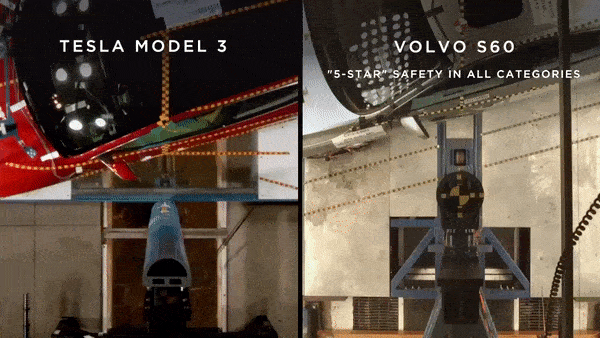The official announcement for the model 3 is out: https://www.bloomberg.com/news/arti...news/articles/2017-07-29/tesla-s-model-3-arrives-with-a-surprise-310-mile-range
The $35k version has a 220 mile range. The $44k version has a 310 mile range.
![Image]()
Tesla is basically calling out Volvo, as they were the ones who provided this video. "In the Model 3, you're fine," Musk said. "The Volvo is wrapped like a burrito around a coat hanger. It's not good." Savage.
If their safety ends up as good as they claim, well sign me up. But I want to wait until the cars get out in the real world, since many car companies engineer to the test, unlike Volvo which engineers to real accidents.
Still, flinging the car into a pole or tree like the above video is certainly within the realm of possibility.
The $35k version has a 220 mile range. The $44k version has a 310 mile range.

Tesla is basically calling out Volvo, as they were the ones who provided this video. "In the Model 3, you're fine," Musk said. "The Volvo is wrapped like a burrito around a coat hanger. It's not good." Savage.
If their safety ends up as good as they claim, well sign me up. But I want to wait until the cars get out in the real world, since many car companies engineer to the test, unlike Volvo which engineers to real accidents.
Still, flinging the car into a pole or tree like the above video is certainly within the realm of possibility.





